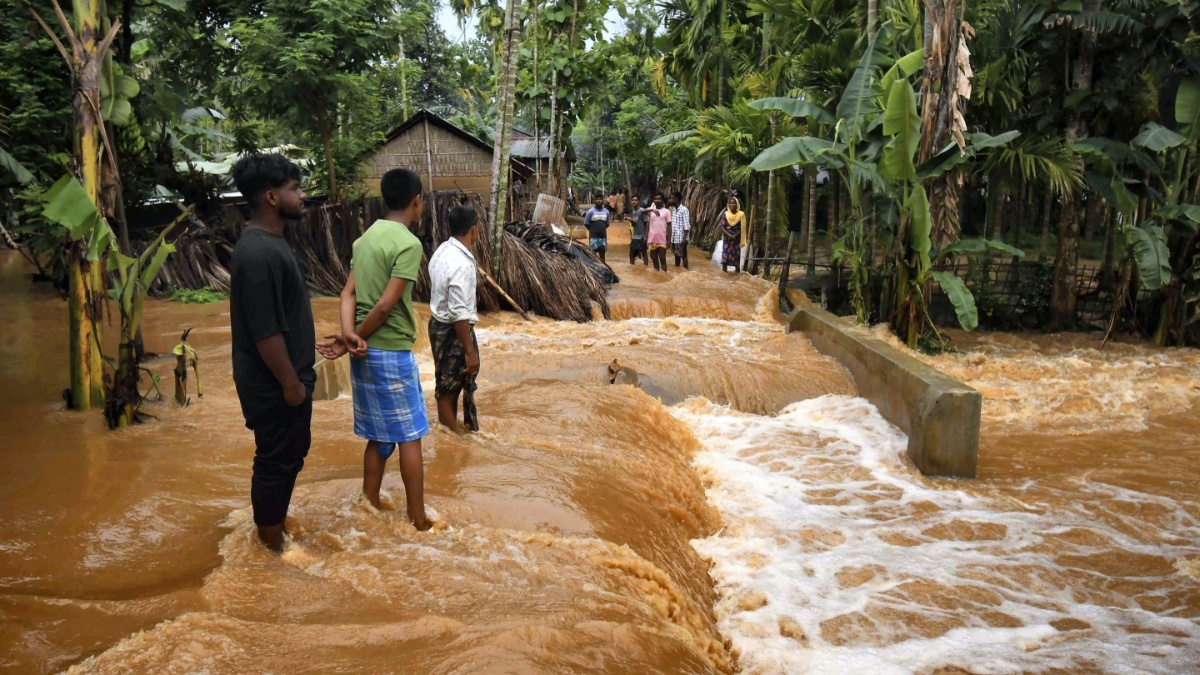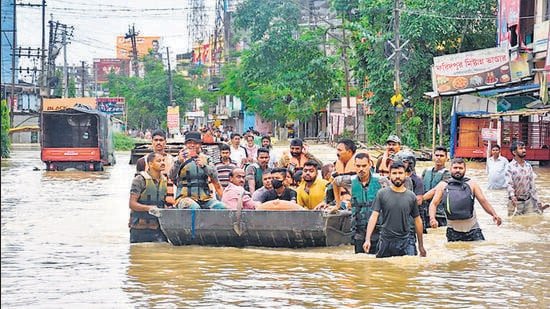Assam has also experienced widespread and repeated destruction by floods in the last 25 years, where over 27 lakh hectares of area have been hit in 35 districts, based on a new report prepared by the State Revenue and Disaster Management Department.

The results bring out the chronic exposure of the state to floods during the season, which have caused immense damage to livelihoods, lives, and infrastructure. The report summarizes that districts such as Dhemaji, Barpeta, Dhubri, Morigaon, and Lakhimpur have repeatedly been the worst-affected areas year after year.
Recurring Crisis with Massive Impact
Assam floods are an annual recurring disaster, mainly brought about by the inundation of the Brahmaputra and its tributaries in the monsoon season. The report highlights that:

As much as 9.31 lakh hectares of area is flooded every year on average.
In the past two and a half decades, the aggregate flood-affected area has exceeded 27 lakh hectares, affecting agricultural areas, human habitations, and public infrastructure.
A few places are inundated two or more times within a year, particularly during high rainfall events in Arunachal Pradesh and the eastern Himalayas.
Human and Economic Cost

The report says:
Assam has experienced heavy human losses, population displacement, and loss of crops, residences, schools, and roads.
The economic cost of post-flood relief has gone into hundreds of crores of rupees every year, straining the disaster management infrastructure of the state.
Government Strategy and Response

The state government of Assam has recognized the historical flood risk and placed a focus on long-term mitigation planning:
River bank protection, upgraded embankment infrastructure, and flood prediction technologies are being invested in.
The government is also collaborating with national organizations such as the Central Water Commission and Brahmaputra Board to develop basin-wide plans for flood and erosion management.
In those districts which are high-risk prone, community-based warning systems and evacuation procedures are being enhanced.
Need for Sustainable Solutions

Experts have alerted that global warming and deforestation upstream could increase the intensity and magnitude of floods in the future years. The report emphasizes integrated measures such as:
- Scientific river dredging,
- Restoration of natural wetlands,
- Sustainable land use planning,
- And greater central-state coordination.
Conclusion
Assam’s frequent floods have become a long-standing development issue, impacting rural livelihoods severely and slowing down progress. As much as relief and reconstruction efforts have been initiated, experts are emphasizing that sustainable and evidence-based flood management policies are the hour of need to safeguard the future of the state.

